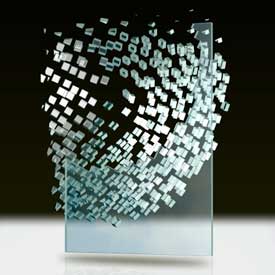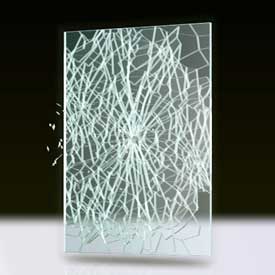Types of Laminated Glass

Annealed Glass
Breaks easily, producing long, sharp splinters.

Tempered Glass
Shatters completely under higher levels of impact energy, and few pieces remain in the frame.

Laminated Glass
May crack under pressure, but tends to remain integral, adhering to the plastic vinyl interlayer.
If laminated glass is broken, the vinyl interlayer remains in the frame, with glass fragments adhering to the interlayer. This provides a strong barrier against forced entry and cannot be cut from one side only, which renders glass-cutters useless.
Cardinal’s laminated glass meets rigorous industry codes, including the American Society of Testing Materials standard for preventing forced entry (ASTM F1233) and the burglary resistant guidelines issued by Underwriters Laboratories (UL972). Our laminated glass is customized to meet the requirements of any security application, providing the best options available.The potential fading reduction of solar energy through glass can be determined by a measurement called Damage Weighted Transmission (Tdw).
Single pane clear glass, with a Tdw of 0.84, allows most of the UV and visible energy to come through into the room, offering very little protection. On the other hand, laminated glass can block over 95% of the UV energy while allowing most of the visible light through. The composite performance is a Tdw of 0.66 – twice the fade protection of ordinary glass, all without affecting the growth of your plants.
Suggested use for Laminated Glass
- Overhead units
- Noise reduction
- Fade protection
- Impact resistant
- To meet building codes







